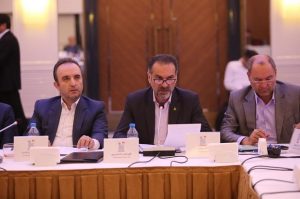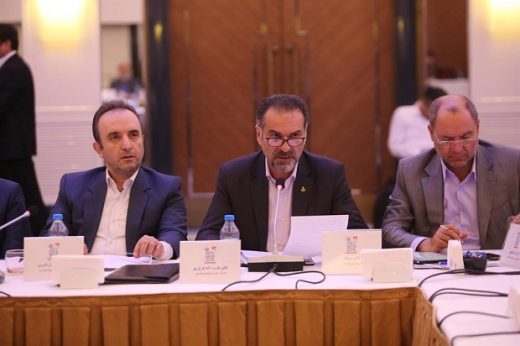 Production of 13.2 million tons of all types of petrochemical products in spring
Production of 13.2 million tons of all types of petrochemical products in spring
The petrochemical producing complexes in the first three months of the Iranian year reached to a record of production of more than 13 million tons of products to be supplied to domestic and foreign markets, of which 1.7 million tons were related to polymer products.
NPC director of production control, Mr. Gh. Farapour said the news at the 30th summit of the Iranian petrochemical complexes’ directors said to the news agencies, on Thursday July 05th. Farajpour, explaining the performance of the petrochemical industry in 96, said about the state of production in the first three months of this year, 97: “In the spring of this year about 13.2 million tonnes of petchems that is equal to 77% of the nominal capacity its of real productions were produced by Iranian Petrochemical companies”.
Farajpour pointing to the variety of products, said that: ” 41% of the products accounting for 5.4m tons are composed of basic materials, 26% equal to 3.4m tons include the feed-stock, 12% percent accounting for 1.7m tons are polymer products, another 12% for chemical fertilizers and 8% of products with 1.1m tons compose aromatic products”.
He said that many petrochemicalcompanies including Pardis, Arvand, Kavian and Amir Kabir have been increasing their production in this year, emphasizing that 1.52 million tons of urea fertilizer was produced in the first quarter of the year. Considering the cooperation of new designers, improved performance and elimination of production barriers and in comparison to the operations in the year 1396, it shows about 17% more production in this year.
Director of NPC production, emphasizing the need to stabilize the phases of the South Pars in the year 97, to integrate the complexes in the ethylene and ethylene supply requirements, the interaction and collaboration of the complexes in the intermediate delivery of food, planning and training of human resources and launching. He also confirmed that the construction of new units are in progress.
He emphasized that in order to increase foodstock supply, short-term solutions such as paying attention to the need for petrochemicals in the distribution of feed, reducing the overhaul of NGL units and improving the quality of repairs have been considered.












